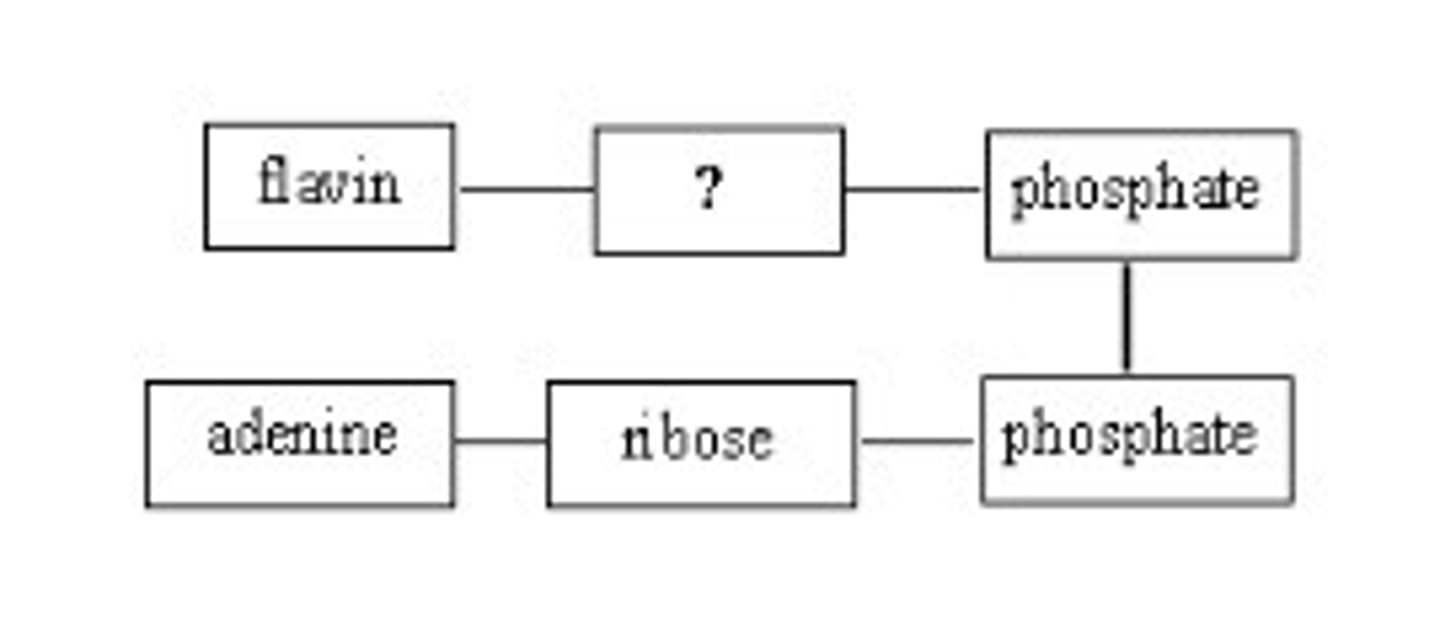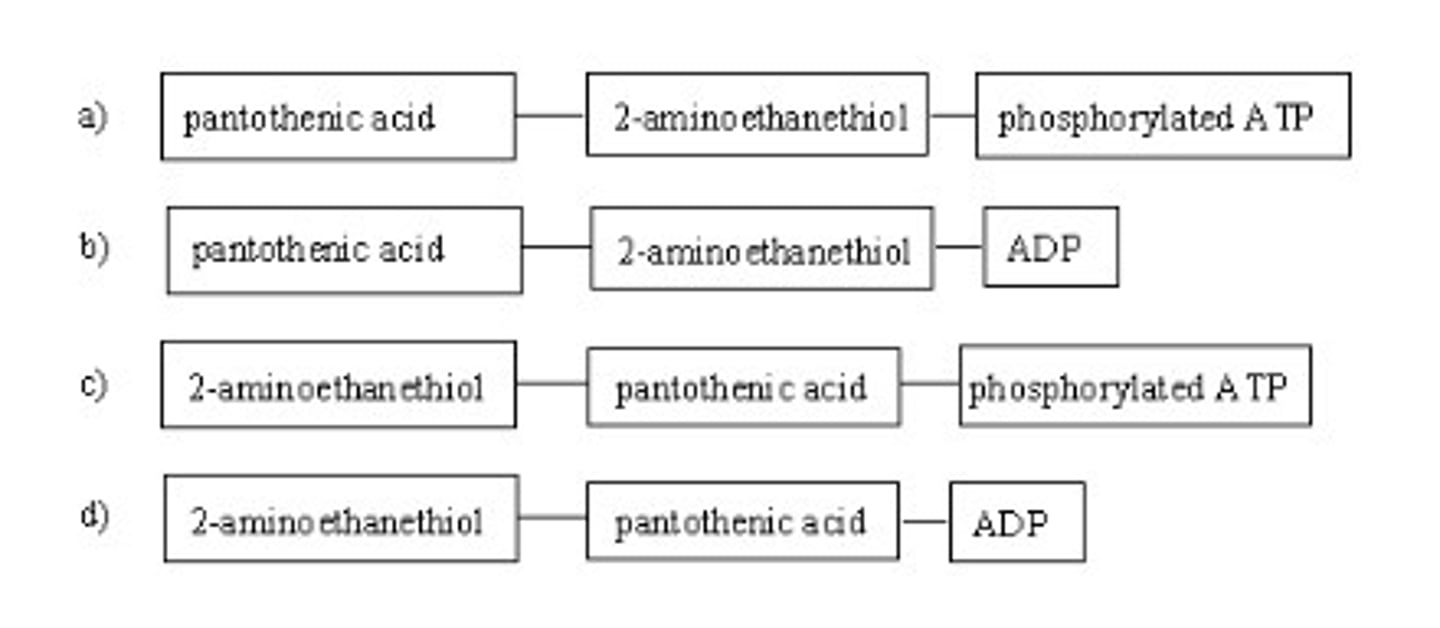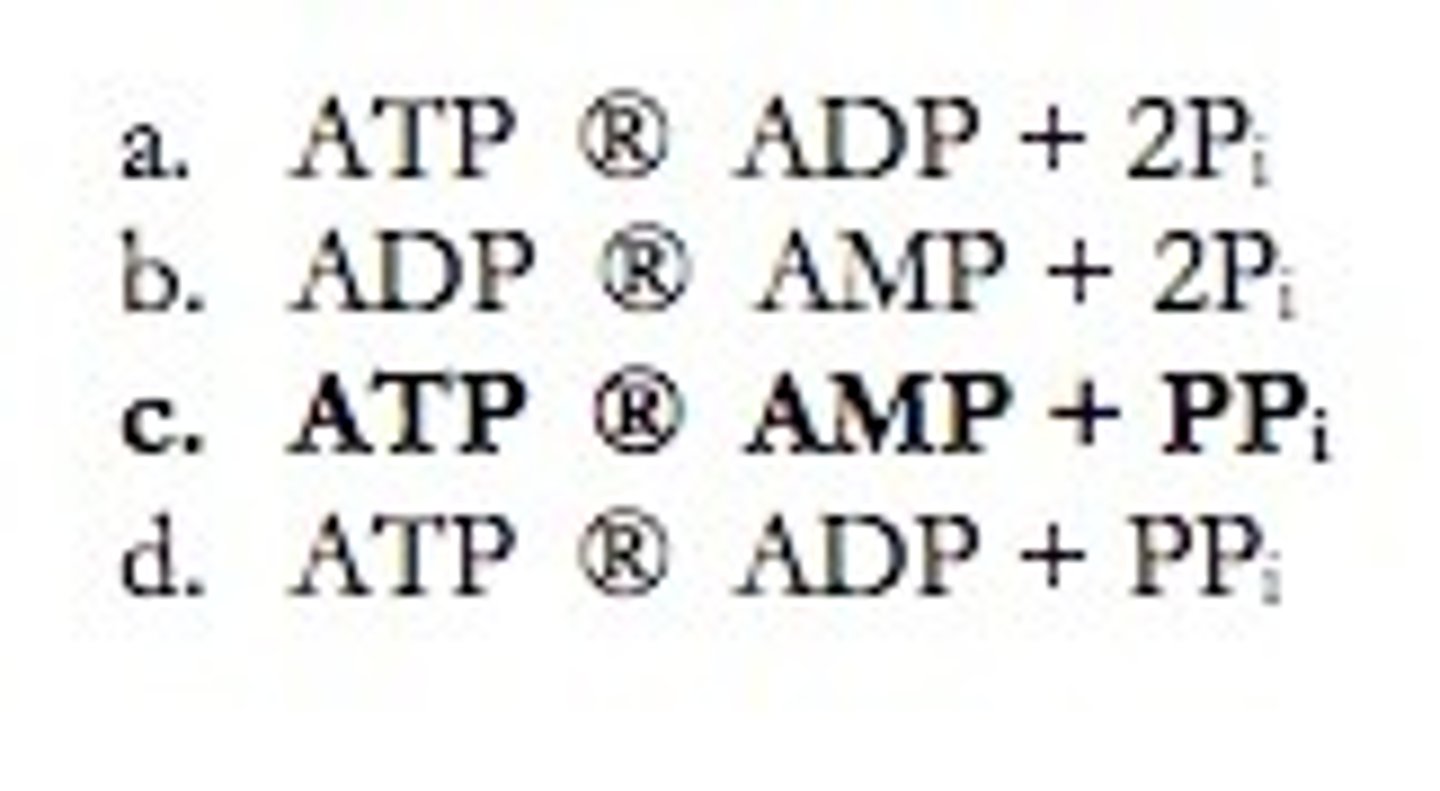Chapter 23 - Biochemical Energy Production
1/70
There's no tags or description
Looks like no tags are added yet.
Name | Mastery | Learn | Test | Matching | Spaced |
|---|
No study sessions yet.
71 Terms
metabolism
the sum total of all the biochemical reactions that take place in a living organism
catabolism
all metabolic reactions in which large biochemical molecules are broken down to smaller ones
anabolism
all metabolic reactions in which small biochemical molecules are joined together to form larger ones
metabolic pathway
a series of consecutive biochemical reactions used to convert a starting material into an end product
eukaryotic cell
a cell in which the DNA is found in a membrane-enclosed nucleus
cytoplasm
the water-based material of a eukaryotic cell that lies between the nucleus and the outer membrane of the cell
organelle
a minute structure within the cytoplasm of a cell that carries out a specific cellular function
cytosol
the water-based fluid part of the cytoplasm of a cell
lysosome
an organelle that contains hydrolytic enzymes needed for cellular rebuilding, repair, and degradation
mitochondrion
an organelle that is responsible for the generation of most of the energy for a cell
50%
50%
the outer membrane of the mitochondria is ___ lipid and ___ protein.
20%
80%
the inner membrane of the mitochondria is ___ lipid and ___ protein.
1. matrix
2. intermembrane space
what 2 compartments are the mitochondrion divided into?
phosphoanhydride bond
the chemical bond formed when two phosphate groups react with each other and a water molecule is produced
acetyl group
the portion of an acetic acid molecule that remains after the -OH group is removed from the carboxyl carbon atom
high-energy compound
a compound that has a greater free energy of hydrolysis than that of a typical compound
1. digestion
2. acetyl group formation
3. citric acid cycle
4. electron transport chain and oxidative phosphorylation
what are the 4 stages in the biochemical energy production process?
digestion
stage of biochemical energy production process that begins in the mouth, continues in the stomach, and is completed in the small intestine
1. cytosol of cells
2. mitochondria
what 2 places does the acetyl group formation occur?
mitochondria
where does the citric acid cycle occur?
mitochondria
where does the electron transport chain and oxidative phosphorylation occur?
common metabolic pathway
the sum total of the biochemical reactions of the citric acid cycle, the electron transport chain, and oxidative phosphorylation
citric acid cycle
the series of biochemical reactions in which the acetyl portion of acetyl CoA is oxidized to carbon dioxide and the reduced coenzymes FADH2 and NADH are produced
electron transport chain
a series of biochemical reactions in which electrons and hydrogen ions from NADH and FADH2 are passed to intermediate carriers and then ultimately react with molecular oxygen to produce water
cytochrome
a heme-containing protein in which reversible oxidation and reduction of an iron atom occur
oxidative phosphorylation
the biochemical process by which ATP is synthesized from ADP as a result of the transfer of electrons and hydrogen ions from NADPH or FADH2 to O2 through the electron carriers involved in the electron transport chain
coupled reactions
pairs of biochemical reactions that occur concurrently in which energy released by one reactions is used in the other reactions
chemiosmotic coupling
an explanation for the coupling of ATP synthesis with electron transport chain reactions that requires a proton gradient across the inner mitochondrial membrane
phytochemicals
biologically active compounds found in plants
flavonoids
group of phytochemicals that have high antioxidant activity
c.
which of the following are products of the citric acid cycle?
a. acetyl CoA and NAD+
b. acetyl CoA and CO2
c. CO2 and NADH
d. more than one correct response
c.
the missing structural subunit in the following diagram for flavin adenine dinucleotide is
a. phosphate
b. ribose
c. ribitol
d. deoxyribose

c.
which of the following carry electrons from the citric acid cycle to the electron carriers of the electron transport chain?
a. CoA
b. NAD+
c. FADH2
d. more than one correct response
c.
which of the following diagrams gives the correct identities and arragement of the structural subunits in coenzyme A?
a. A
b. B
c. C
d. D

c.
when combined with electron transport, one turn of the citric acid cycle produces ____ ATP.
a. 24
b. 12
c. 10
d. 14
c.
which of the following substances is both a reactant and a product in the operation of the electron transport chain?
a. O2
b. FADH2
c. CoQ
d. more than one correct response
d.
in stage three of metabolism, the overall result is to release
a. glucose and water
b. lactate and acetyl CoA
c. glycogen and water
d. carbon dioxide and energy
c.
in electron transport, the synthesis of ATP from ADP + Pi is called
a. glycolysis
b. fermentation
c. oxidative phosphorylation
d. isomerization
c.
which of the following is a correct skeletal equation for a hydrolysis reaction involving adenosine phosphates?

a.
the "fuel" for the citric acid cycle is
a. acetyl CoA
b. citric acid
c. citrate ion
d. oxaloacetate ion
c.
in which two steps of the citric acid cycle are molecules of carbon dioxide produced?
a. steps two and five
b. steps three and five
c. steps three and four
d. steps four and six
d.
which of the following substances does not contain a B vitamin as a structural subunit?
a. flavin adenine dinucleotide
b. nicotinamide adenine dinucleotide
c. coenzyme A
d. no correct response
a.
which of the following substances contains two or more high energy phosphate bonds?
a. ATP
b. ADP
c. AMP
d. more than one correct response
b.
which of the following is a correct letter designation for the reduced form of a coenzyme?
a. NAD+
b. FADH2
c. NADH2
d. more than one correct response
c.
which of the following carry electrons from the citric acid cycle to the electron carriers of the electron transport chain?
a. CoA
b. NAD+
c. FADH2
d. no correct response
d.
oxidative phosphorylation is the process in which ATP is synthesized
a. from ATP synthase
b. from ADP
c. using energy from the dissipation of a "proton gradient"
d. more than one correct response
c.
the correct notation for the reduced form of nicotinamide adenine dinucleotide is
a. NAD+
b. NAD
c. NADH
d. NADH2
d.
which of the following statements about mitochondria is correct?
a. the interior region of a mitochondrion is the intermembrane space
b. the folds of the outer membrane are called cristae
c. the outer membrane of mitochondria is not permeable to any molecules
d. mitochondria are located within the cellular cytosol
c.
another name for the citric acid cycle is
a. tricarboxcylic acid cycle
b. electron transport
c. more than one correct response
d. Krebs cycle
b.
the citric acid cycle takes place in the
a. mitochondria
b. cytoplasm
c. Golgi apparatus
d. endoplasmic reticulum
a.
one method of regulation of the citric acid cycle is
a. allosteric control
b. osmosis
c. carbon dioxide production
d. temperature control
a.
which of the following is NOT one of the four general stages in the biochemical energy production process?
a. glycolysis
b. acetyl group formation
c. digestion
d. oxidative phosphorylation and the electron transport chain
a.
the citric acid cycle is used in the oxidation of
a. glucose only, fatty acids and proteins
b. fatty acids only
c. glucose and fatty acids only
d. glucose only
b.
the fuel for the citric acid cycle is
a. ethanol
b. acetyl CoA
c. carbon dioxide
d. citrate
d.
which of the following substances contains two or more high energy phosphate bonds?
a. ADP
b. AMP
c. more than one correct response
d. ATP
c.
which of the following processes produces CO2 and H2O from molecular oxygen?
a. decomposition
b. oxidation
c. respiration
d. reduction
b.
which of the following chemical formulas describes the reduced form of nicotinamide adenine dinucleotide?
a. NADH2
b. NADH
c. NAD
d. NAD+
a.
how many phosphorus-oxygen bonds are broken and how many phosphorus-oxygen bonds are formed, respectively, in the conversion of ATP to AMP via hydrolysis?
a. 2 and 2
b. 1 and 2
c. 2 and 0
d. 1 and 1
a.
which statement concerning coenzymes and redox reactions is incorrect?
a. FAD is the reduced form of FADH2
b. NAD+ is the oxidized form of NADH
c. oxidation can be considered as loss of hydrogen or gain of oxygen
d. reduction can be considered as gain of hydrogen or loss of oxygen
a.
the mitochondria are the organelles where ____ takes place and most ___ is produced.
a. citric acid cycle; ATP
b. catabolism; acetyl coenzyme A
c. catabolism; ATP
d. citric acid cyle; acetyl coenzyme A
a.
which coenzyme is a participant in a reaction that forms a carbon-oxygen double bond?
a. NAD+
b. ATP
c. CoA
d. FAD
a.
which of the following statements about metabolism is correct?
a. metabolism is the sum total of all the biochemical reactions that take place in a living organism
b. a metabolic pathway may only be cyclic in which a series of reaction regenerated the first reactant
c. more than one correct response
d. anabolic reaction sequences usually produce energy
c.
which of the three major cycles of metabolism includes the citric acid cycle?
a. stage one
b. stage four
c. stage three
d. stage two
b.
which of the following is NOT a similarity shared between nicotinamide adenine dinucleotide and flavin adenine dinucleotide?
a. both contain vitamin B structural components
b. both accept the same number of H atoms when reduced
c. both can be described by 3 and 6 subunits
d. no correct response
b.
which of the following coenzymes facilitates double bond formation between carbon atoms?
a. ATP
b. FAD
c. NAD
d. CoA
a.
how many "strained" phosphate bonds are present in an AMP molecule?
a. zero
b. one
c. two
d. three
b.
which of the following substances has two unsubstituted ribose molecules as structural subunits?
a. more than one correct response
b. NAD+
c. FADH2
d. CoA
d.
which of the following reactions is the least energetic?
a. ADP + H2O --> AMP + Pi
b. ATP + H2O --> ADP + Pi
c. ATP + H2O --> AMP + PPi
d. AMP + H2O --> adenosine + Pi
d.
which molecule, produced through catabolic processes during digestion, is necessary to start the citric acid cycle?
a. citric acid
b. citrate ion
c. oxaloacetate ion
d. acetyl CoA
c.
a metabolic pathway in which a series of steps, each using different enzymes, regenerates one of the early reactants, is a(n) ___ pathway.
a. catabolic
b. anabolic
c. cyclic
d. linear
a.
the biochemical process in which complex molecules are broken down into simpler ones and energy is released is referred to as
a. catabolism
b. metabolism
c. anabolism
d. digestion